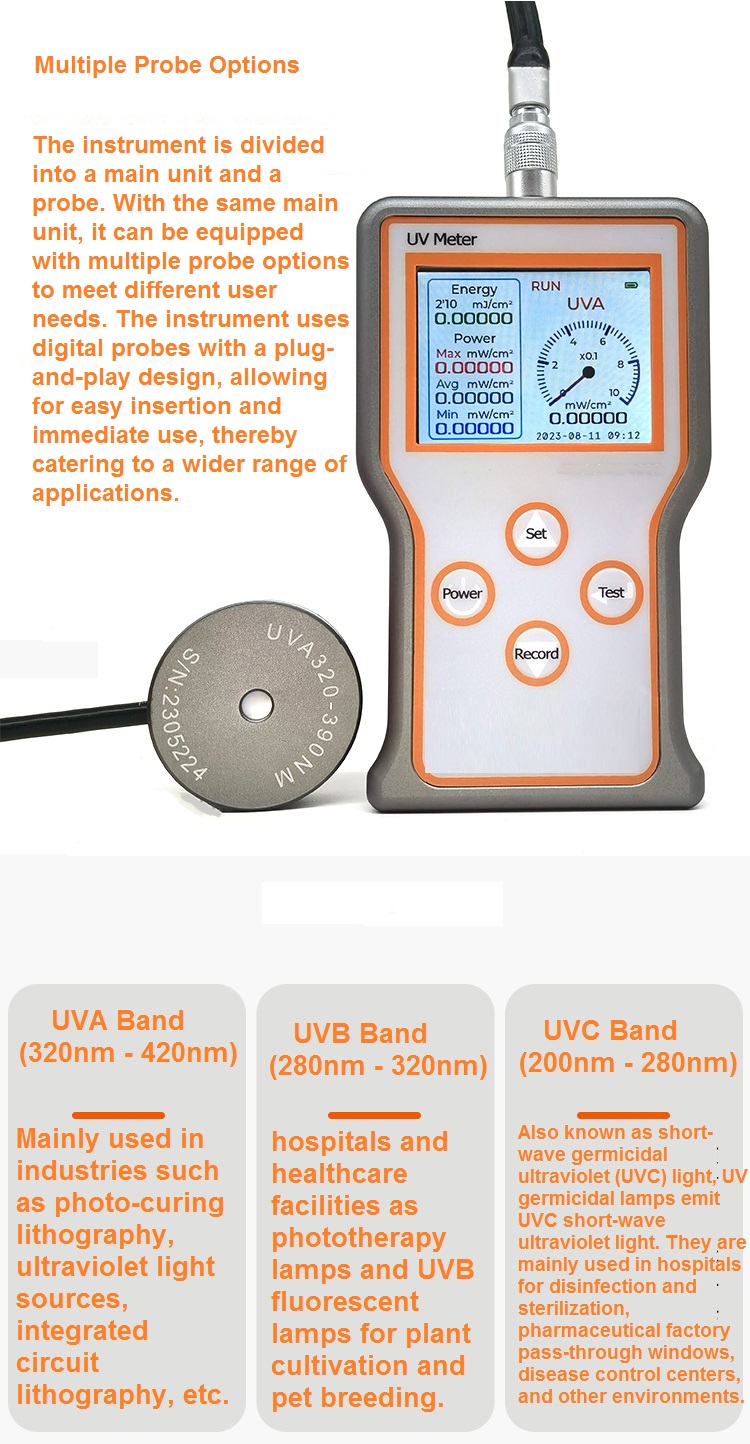The principle of using a UV lux meter:
Illumination intensity (illuminance) refers to the degree to which an object is illuminated, that is, the ratio of the luminous flux obtained on the surface of the object to the illuminated area. Ultraviolet illuminance meter, also known as ultraviolet irradiance meter, ultraviolet intensity meter, etc., is a specialized instrument for measuring luminosity and brightness. It mainly measures the radiation intensity of ultraviolet rays and is used for measuring ultraviolet radiation in fields such as photochemistry, polymer material aging, non-destructive testing, hygiene, medical treatment, chemical industry, hygiene, food, electronics, plant cultivation, and large-scale integrated circuit lithography.
The ultraviolet illuminance meter uses 35 different probe combinations to measure UVA, UVB, UVC, visible light, and infrared light. The measurement wavelengths are divided into UVA (320nm-380nm), UVB (280nm-320nm), and UVC (200nm-280nm), and some high-end products can detect a wide range of wavelengths. Humanized operation, compact and flexible, can be operated with one hand, the probe is separated from the body, convenient and simple, and has automatic memory function, which can store 20 sets of data.